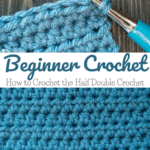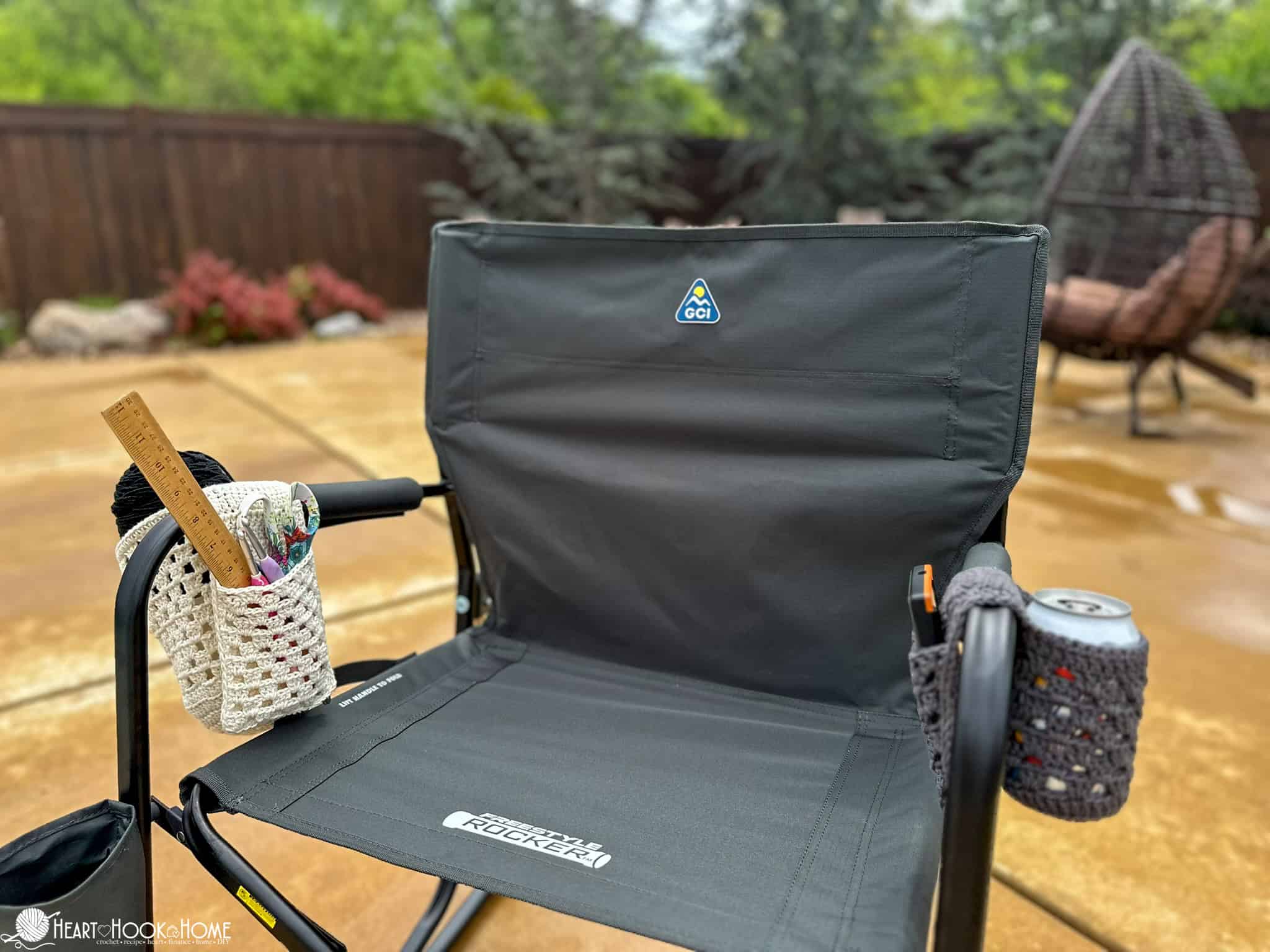Half Double Crochet Tutorial
This post may contain affiliate links, meaning that I may earn a small commission if you make a purchase. See our disclosure policy for more information.
The half double crochet: halfway between the single crochet and the double crochet, and abbreviated as hdc in crochet patterns. Using components of both the single and double crochet stitches, this stitch can be used to make anything from blankets to cardigans. Let’s learn how to crochet the Half Double Crochet stitch with this tutorial!

How do I do a Half Double Crochet?
The half double crochet stitch has three loops: a front loop, a back loop and a third loop. When reading a crochet pattern, the half double crochet will be abbreviated as hdc. We use this stitch to make the Blanket Cardigan, The Cozy Coed Cardigan, and the Painted Canyon Cardigan. I love this stitch and it is very beginner-friendly.

To make the Half Double Crochet stitch, you will…
1. Yarn over and insert your hook into the next stitch.


2. Hook the yarn and pull the yarn through the stitch you just went into. You should now have three loops on your hook.


3. Yarn over again and pull through all three loops.


Wanna save this for later?
That’s all there is to the HDC!
To start a new row, chain one and turn your work. Start in the very first stitch with step one above.

Half Double Crochet Tutorial Video:

If you are brand new to crochet, join the Heart Hook Home Community on Facebook for kindred spirits, knowledge, and comraderie. Follow me on Pinterest, Facebook, and Instagram to see patterns using the Half Double as well as other basic crochet stitches.
More crochet tutorials:
Crochet Video Tutorial: How to Crochet The Chain Stitch
How to Crochet The Single Crochet (Video Tutorial)
How to Crochet the Double Crochet (Video Tutorial)
Why Size Matters in Crocheting and Knitting
9 Tips for Traveling with Crochet
Use Industrial Clips for Yarn Bobbins in Crochet and Knitting







